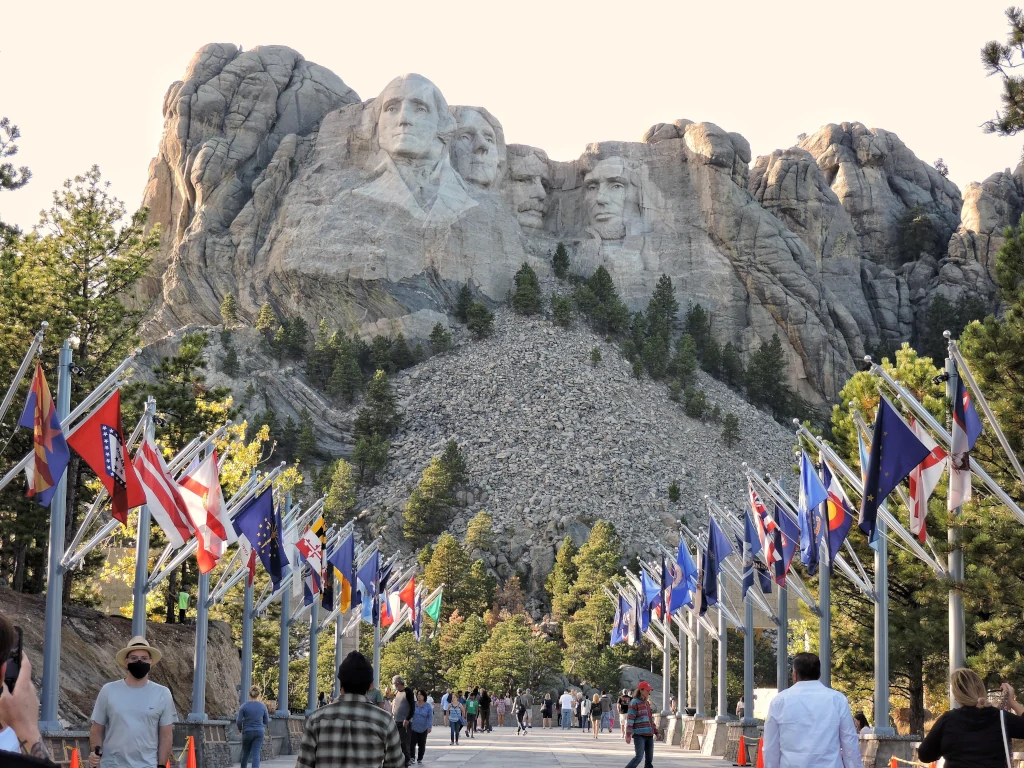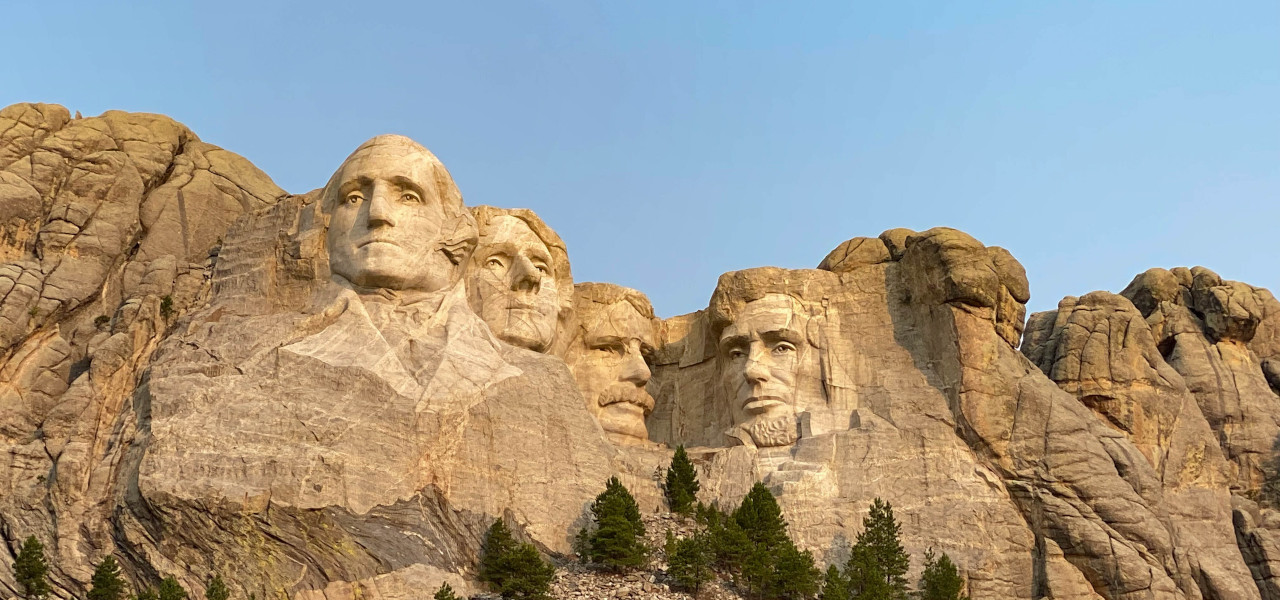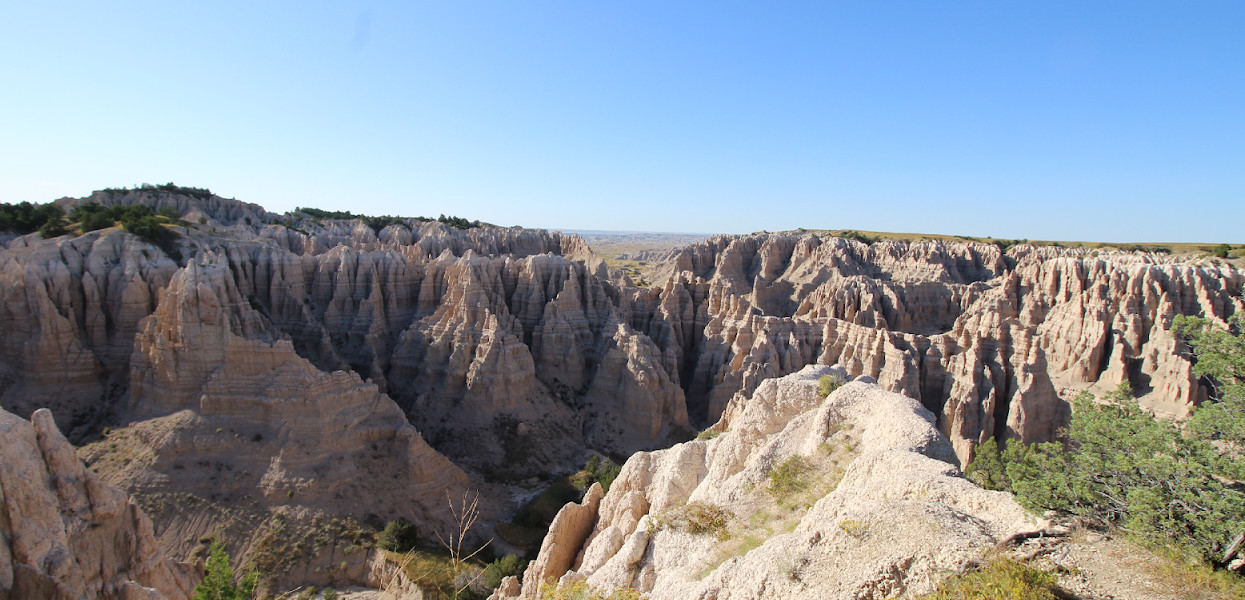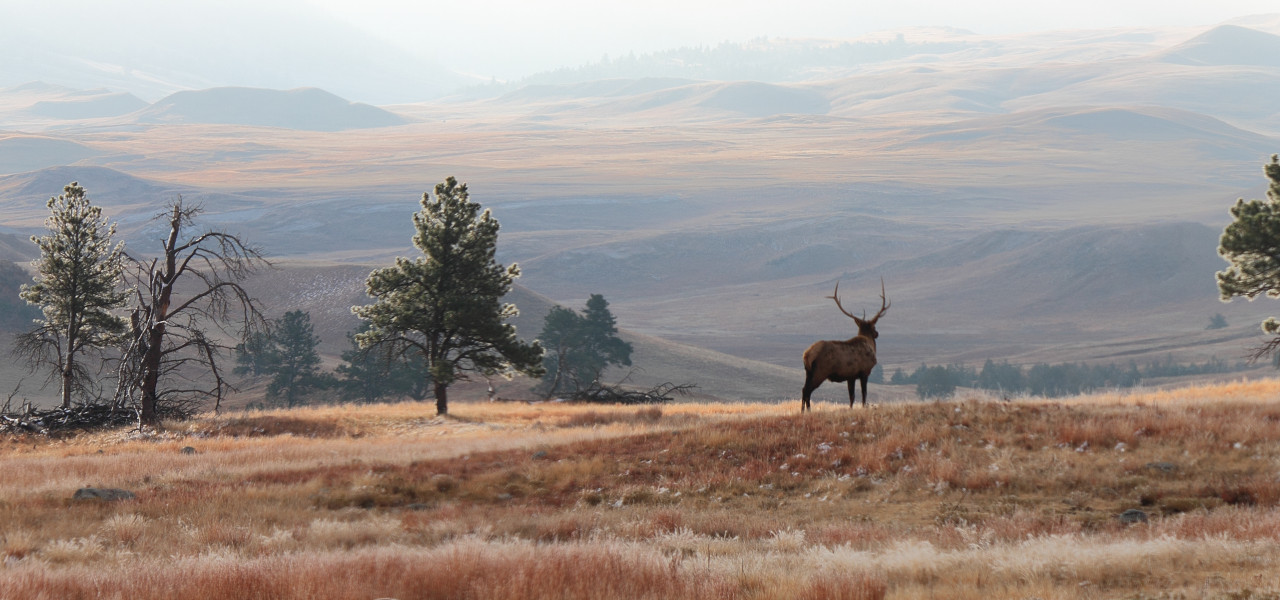Displaying America’s Finest
Besides the Statue of Liberty and the Golden Gate Bridge, there is probably no other attraction in the United States that is as famous worldwide as the Mount Rushmore National Memorial. Over two million travelers make their way to South Dakota each year to see one of the most prominent and arguably most controversial works of art in recent history.
The memorial sits right at the heart of the Black Hills region of South Dakota, displaying the faces of America’s most important Presidents at the time of construction. From left to right, these are:
- George Washington, founding father and 1st president
- Thomas Jefferson, founding father and 3rd president
- Theodore Roosevelt, 26th president
- Abraham Lincoln, 16th president
The presidential likenesses have all been blasted with explosives into the rock massif over several years, starting in the year 1927. To this day, the massive piles of rubble that were caused by 24 years of hard labor can be seen at the base of Mount Rushmore.
Mount Rushmore, Black Hills, Meals & A Variety Show
Undoubtedly, this has to be the complete Mount Rushmore experience! An experienced guide will tell all about the Monument, the surrounding area and more. Two meals are included in this full-day experience, as is a cowboy-themed dinner show!

History and Creation of the Monument
The concept for the memorial dates back to the 1920s when art historian and artist Doane Robinson was considering how to make the Black Hills more attractive to tourists. Robinson came up with the idea of creating large sculptures of famous figures from the country’s history to attract tourists.
It had to be big enough that it would make South Dakota known throughout the US and attract travelers to the area.
Ultimately, artist Gutzon Borglum was commissioned to implement the project. Borglum began work on the sculptures in 1927 and continued to work on them until his death in 1941.
The sheer scope of of the project makes Mount Rushmore one of the largest pieces of art ever created. And Doane Robinson, its initial creator, was eventually proven right: with over 2 million annual visitors, it has become one of America’s most prominent sightseeing destinations and a symbol for the history, culture and politics of the country.
And that, although the monument was actually planned to be much more gigantic: according to the original idea, the presidents were to be portrayed up to their waists. However, due to the budget, it was only the heads.
But what would a great art project be without a little controversy? The area around Mount Rushmore was once owned by the Lakota Sioux, and the Black Hills are their sacred mountains. People are still not completely satisfied with the construction of the gigantic monument, and so it happened that in another part of the Black Hills, a counter-project is currently being made with the support of the Lakota Chiefs: The Crazy Horse Memorial, which was still under construction at the time of its completion to be significantly larger than Rushmore is.
The Hall of Records
In addition to the faces, the original plan also envisaged a Hall of Records, which would store and publicly display historically relevant documents from the United States. The large, pompously decorated chamber that would once contain the Hall of Records was blasted out of the rock and still exists today, but these plans were not pursued.
Work on the memorial was largely halted in 1939 and Borglum also died two years later in 1941. While his son continued to do some minor work on the artwork, with the United States entering World War II, all available resources were devoted to the war effort. To this day, only restoration work is being carried out on the monument, but no new faces have been blasted into the rock – even if ideas for potential extensions have often been expressed.
Today, however, the chamber actually contains some documents. In the form of a time capsule, future archaeologists can find information about the founding of the USA and the history of Mount Rushmore here. However, the chamber is not accessible to tourists.
Hiking & Discovering
A visit to Mount Rushmore National Memorial can be more than just checking off an item on the to-do list. Especially since there are a lot more things to do in the area than just stare at the Presidents.
For example, in the Scultpor’s Studio you can learn more about how the monument was made. Here, rangers will not only explain the various tools to you, but also the techniques used by the sculptors who have worked on the work of art for several decades. There are more exciting insights into the history of the work of art in the Lincoln Borglum Visitor Center – there you can watch a quarter-hour film, which tells more details about the history of its creation.
Numerous, picturesque hiking trails open up all around the mountain, on which the surrounding region can be explored:
- Presidential Trail – the fully paved half-mile loop provides a close-up view of the Presidential sculptures and offers panoramic views of the surrounding Black Hills.
- Borglum Viewpoint Trail – the 1.5-mile round-trip hike takes you to a higher elevation for better views of the surrounding area and a rewards you with a different perspective on the sculptures.
- Centennial Trail – Constructed to mark the 100th anniversary of South Dakota statehood, the 111 mile-long trail passes by the Black Hills and also runs near Mount Rushmore. If you follow the trail a little further, you will also see Custer State Park, before the trails eventually ends at Wind Cave National Park.
- Flume Trail – Following the former flume bed that enabled miners to carry gold 20 miles down stream, this trail is of much historical significance to the local people.
Private Mount Rushmore and Flume Trail Hike
This 3-mile guided hike on the Flume Trail takes you through the amazing scenery of the Black Hills and culminates with a visit to the famous Mount Rushmore National Memorial.




